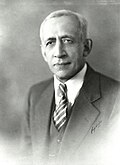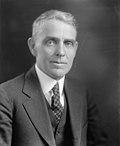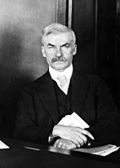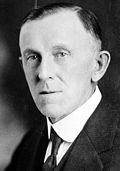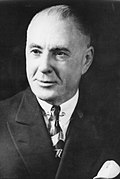November 4, 1930 | ||||||||||||||||||||||||||||||||||||||||||||||||||||||||||||||
32 of the 96 seats in the United States Senate 49 seats needed for a majority | ||||||||||||||||||||||||||||||||||||||||||||||||||||||||||||||
|---|---|---|---|---|---|---|---|---|---|---|---|---|---|---|---|---|---|---|---|---|---|---|---|---|---|---|---|---|---|---|---|---|---|---|---|---|---|---|---|---|---|---|---|---|---|---|---|---|---|---|---|---|---|---|---|---|---|---|---|---|---|---|
| ||||||||||||||||||||||||||||||||||||||||||||||||||||||||||||||
 Results of the elections: Democratic gain Democratic hold Republican gain Republican hold No election | ||||||||||||||||||||||||||||||||||||||||||||||||||||||||||||||
| ||||||||||||||||||||||||||||||||||||||||||||||||||||||||||||||
The 1930 United States Senate elections occurred in the middle of Republican President Herbert Hoover's term. The 32 seats of Class 2 were contested in regular elections, and special elections were held to fill vacancies. With the Great Depression beginning to take hold, Republican incumbents became unpopular, [1] and Democrats picked up a net of eight seats, erasing the Republican gains from the previous election cycle, however, Republicans retained control of the chamber. This was the first of four consecutive Senate elections during the Depression in which Democrats made enormous gains, achieving a cumulative pick-up of 34 seats.
Contents
- Gains, losses, and holds
- Retirements
- Defeats
- Post-election changes
- Change in composition
- Before the elections
- After the elections
- Race summary
- Special elections during the 71st Congress
- Elections leading to the 72nd Congress
- Closest races
- Alabama
- Arkansas
- Colorado
- Delaware
- Delaware (regular)
- Delaware (special)
- Georgia
- Idaho
- Illinois
- Iowa
- Kansas
- Kansas (regular)
- Kansas (special)
- Kentucky
- Kentucky (regular)
- Kentucky (special)
- Louisiana
- Maine
- Massachusetts
- Michigan
- Minnesota
- Mississippi
- Montana
- Nebraska
- New Hampshire
- New Jersey
- New Jersey (regular)
- New Jersey (special)
- New Mexico
- North Carolina
- Ohio (special)
- Oklahoma
- Oregon
- Pennsylvania (special)
- Rhode Island
- South Carolina
- South Dakota
- Tennessee
- Tennessee (special)
- Tennessee (regular)
- Texas
- Virginia
- West Virginia
- Wyoming
- Wyoming (special)
- Wyoming (regular)
- See also
- Notes
- References
In Louisiana, Democratic senator-elect Huey Long chose not to take his Senate seat until January 25, 1932, so he could remain as Governor of Louisiana. The Republicans therefore retained the plurality of seats at the beginning of the next Congress (with Vice President Charles Curtis (R) able to cast tie-breaking votes, the Republicans would have majority control).







